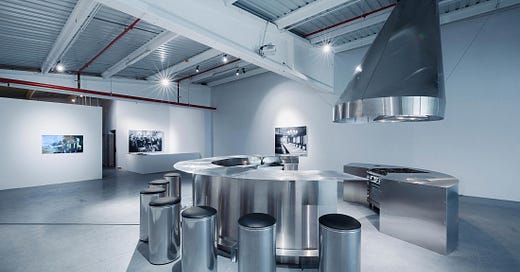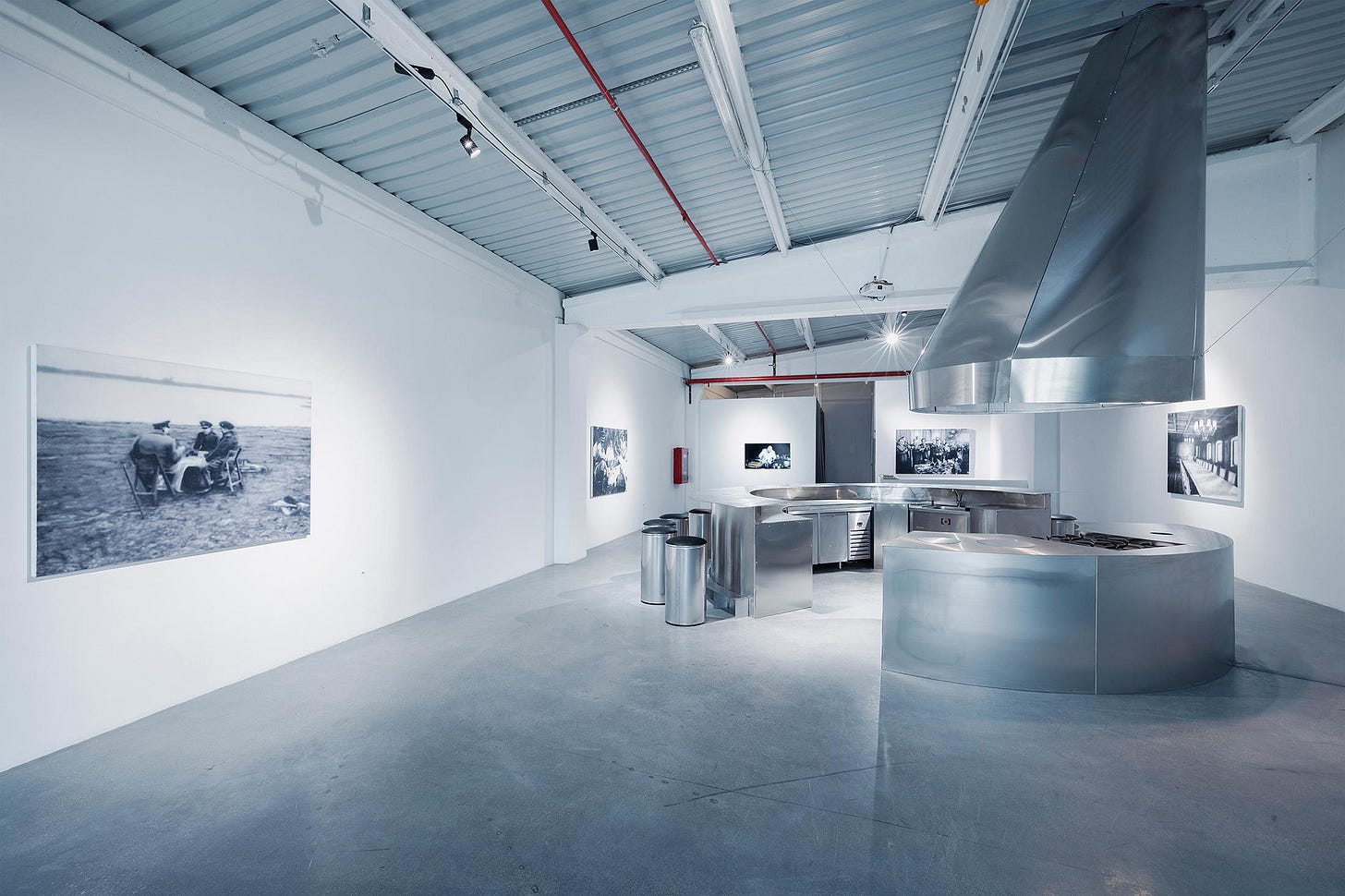Strongman Supper: A Provocative Culinary Experience
A glimpse into TUNCA's "Kitchen With No Reception" solo exhibition at IMALAT-HANE
Whether you celebrate it or not, last Friday, the 8th of March, was International Women’s Day, and the reality of the rise of right-wing politics and the re-appearance of the “Strong Man” figures are too apparent for me to ignore. In a world where so many women are losing their homes, lives and their children to war and conflict driven by men how can we still find equality and justice? Having met artist TUNCA based in Ayvalik, Turkey a while back during his residency in Cité internationale des arts, Paris in 2018 I remember vividly the conversation we had around his practice and developing work around strong political male figures in history. Recently, I came across his solo exhibition titled Kitchen With No Reception including four culinary activations or performances where the artist hosted cooking performances together with experts from various disciplines, where the meals were served to the audience simultaneously. The exhibition with site-specific performances held in the space designed in collaboration with Jorela Karriqi, offers an interactive dining experience fostering encounters between the guests and spectators. In his practice, navigating between official histories and individual narratives TUNCA explores the narratives within the immense layers of memory by recreating a space where the visitor witnesses beyond documentary.
In a sterile kitchen-like set-up, one is faced with hyper-realist depictions of World War I & II “strong men” figures amongst culinary books, with these men’s favourite culinary delights open for people to see and guess which meal paired with which political figure. Even though the exhibition responds to a certain time and memory, it makes one think about how history shapes and reenacts our futures. When I use the term “strong man”, I especially link it to Gideon Rachmann’s book The Age of the Strong Man and the use of the terminology relating to the new age of political male figures such as Putin, Erdogan, Bolsanaro and Nethenyahu, who are inspired by and use the tactics of previous dictators in the context of democracy and law. As Rachman states “To understand the strong man phenomenon, we need to look more closely at what it is about the modern world that has created a political market for figures like these.” 1We also need to look deeper into the formation of the modern world and how totalitarianism shaped our modern world in the context of socio-economic, technological and geo-political elements. According to Rachman, “Strongman leaders disdain institutions, but they love ‘the people’. Typically, they claim to have an intuitive understanding and sympathy for ordinary folk. That is why the strongman phenomenon is closely associated with populism — a style of politics that disdains elites and experts and venerates the wisdom and instincts of the common man.” 2
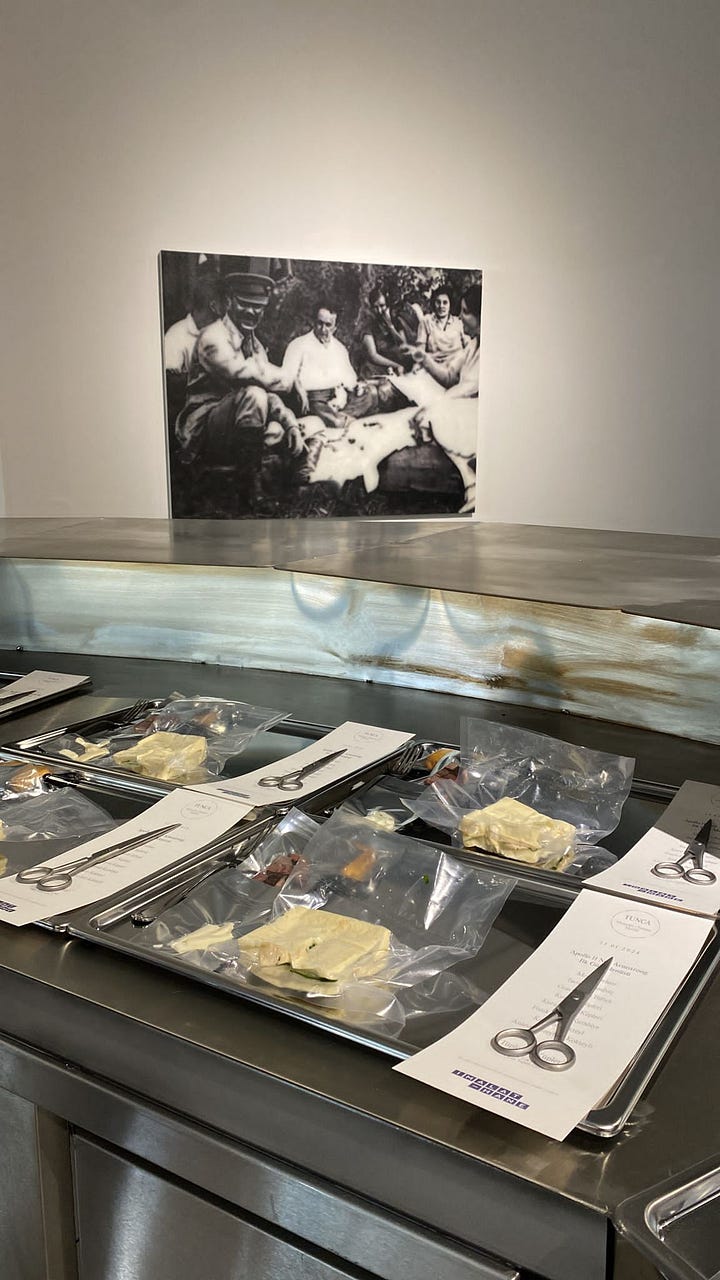
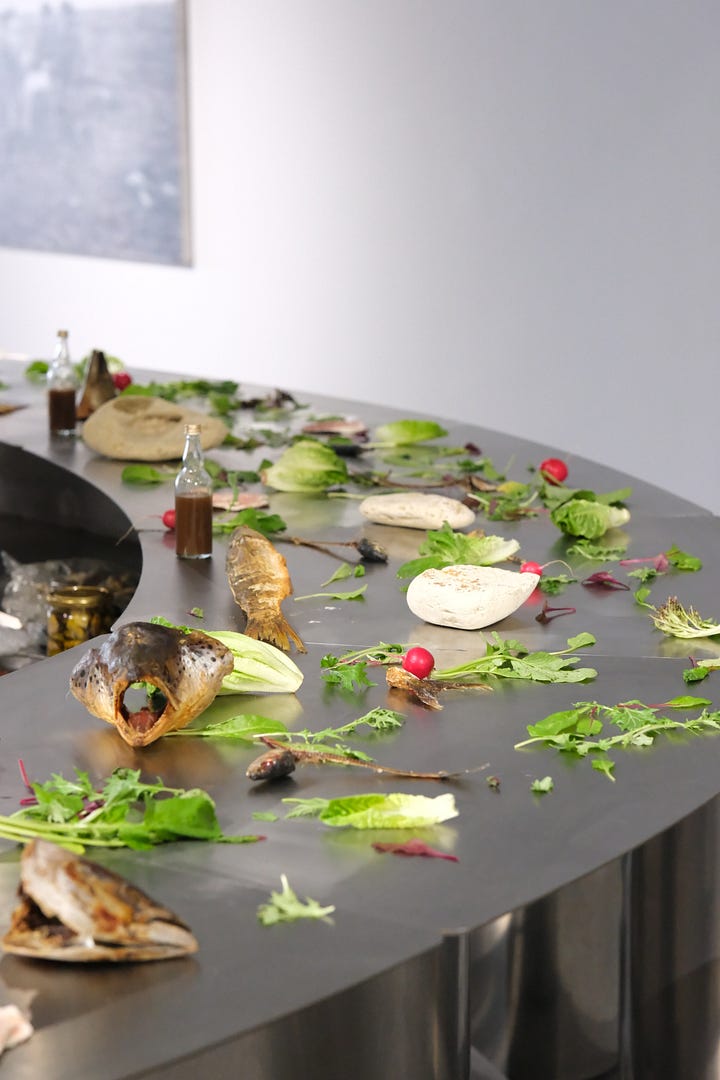
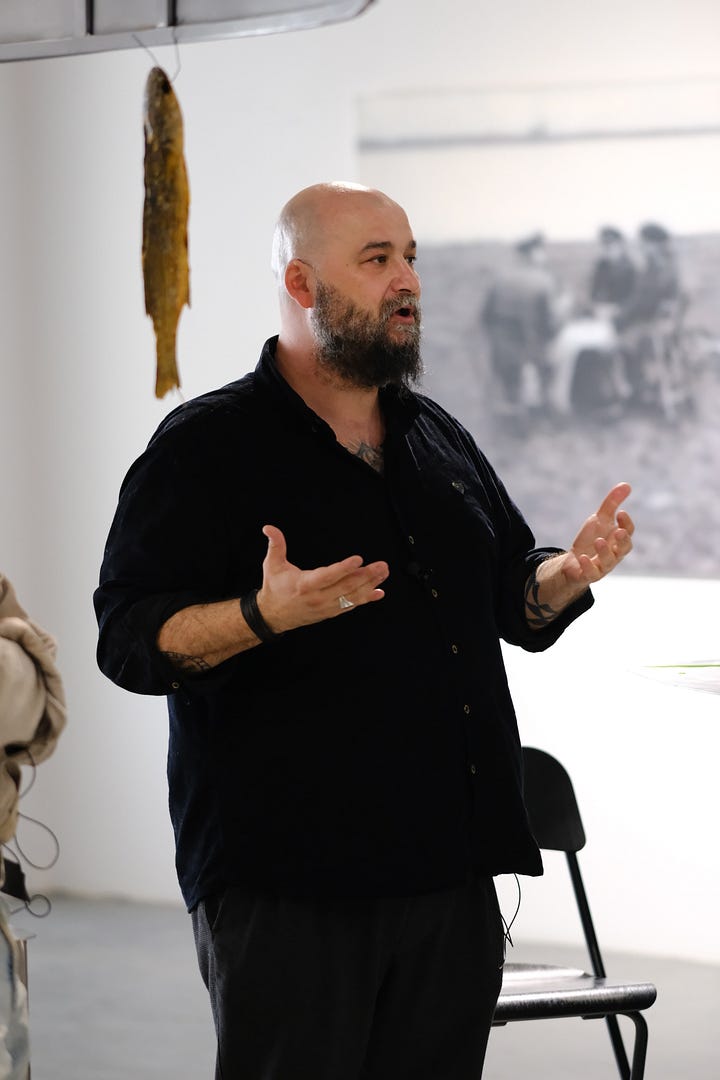
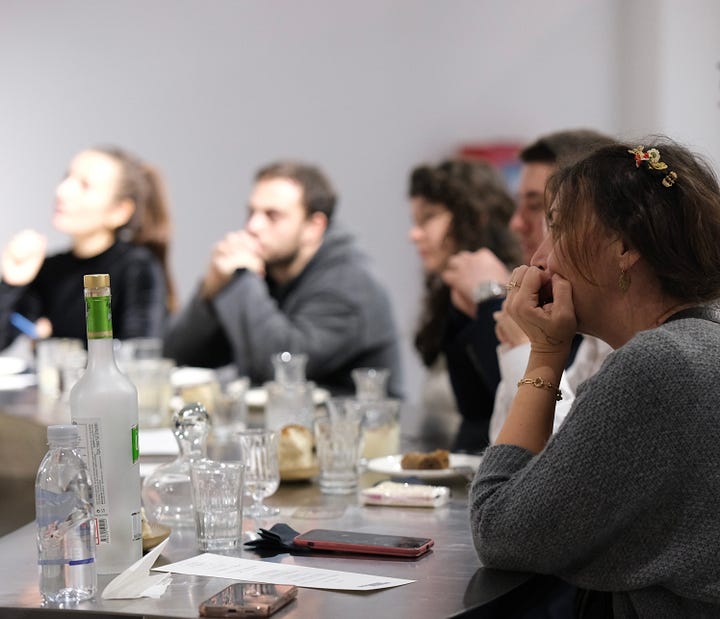
What I find fascinating and illuminating about TUNCA’s research-oriented approach to artistic practice is how he combines historiography, excavating the past, reconstructing, and reviving it through the gastronomic 'taste’. The historical connotations and definition of taste is a complex and intricate one in the context of how class and value with social boundaries defined food preference. According to Freedman, “Throughout history recurrent patterns emerge in how people thought about food and its place in daily life and the expression of taste. There are many points of similarity and differences across time and continents, as well as how cultures dealt with outside influences…”3 Alongside its many different attributes and links to colonisation, nutritional benefits, geo-politics and ecology, food is a common denominator, it can also bring people from all backgrounds together on one table. Wishing I would have had the chance to have made it to one of the performances, I wonder how TUNCA combined ‘taste’ and presentation of food in the context of Kitchen With No Reception.
In the white-cube exhibition space at IMALAT-HANE4 where photographic documentation merge with TUNCA’s subjective memory, then transferred onto paper as another chemical residue using a technique with graphite surrounds the circular kitchen layout. Through a performance programme of collaborations between chefs and other inter-disciplinary practitioners, TUNCA invites them to respond to the exhibition which can be seen in Bursa, Turkey ( not more than a three-hour car ride from Istanbul) until 6th of April 2024.
For more information and to visit the exhibition please click here. Lastly, even though I write in my free time, I spend a lot of time researching, reading, and looking before I publish my articles. If you can support my practice in any way, whether by sharing or becoming a free or paid subscriber, please do! Thank you.
Rachman, G. (2022). The Age of The Strongman. Random Hous, pp 16.
Rachman, G. (2022). The Age of The Strongman. Random Hous, pp 13.
Freedman, P. (2019). Food : the history of taste. London: Thames & Hudson, pp.10–14.
imāl deriving from manufacture and production, meaning setting to work, making functional and hane deriving from house or place meaning residence. IMALAT-HANE is an art space located in the Bursa Organized Industrial Zone. It aims at creating an opportunity for the production, exhibition and discussion of contemporary artworks in Bursa. Its goal is to make the city join the art ecosystem. It acts with the awareness that the projects, the production and circulation of which it supports, are documents joining Bursa’s memory.

